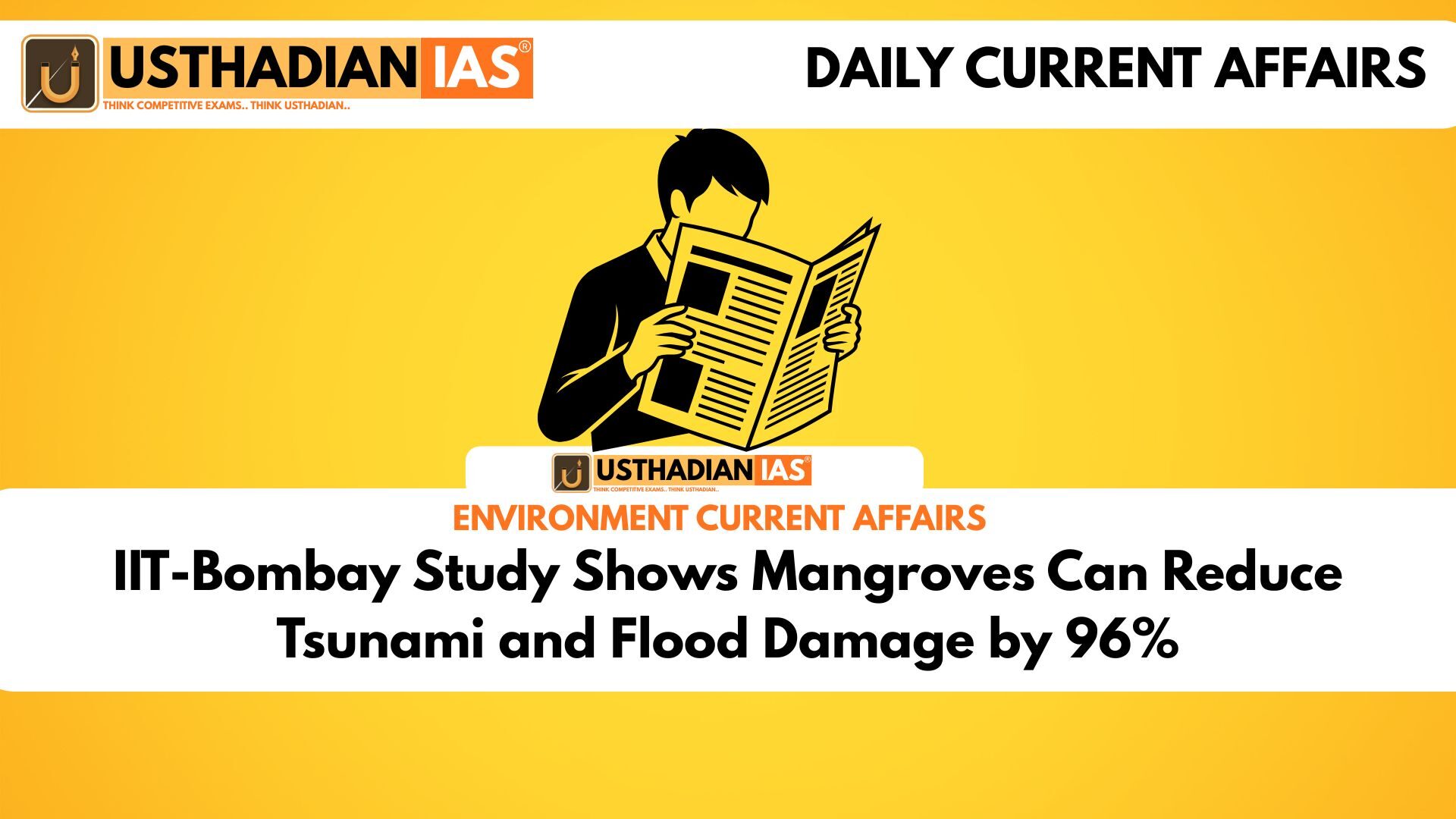Mangroves as Nature’s Frontline Defenders
IIT-Bombay Study Shows Mangroves Can Reduce Tsunami and Flood Damage by 96%: India’s coastlines are frequently exposed to natural disasters like cyclones, tsunamis, and floods. In this context, mangroves play a critical role as natural bio-shields. These trees grow in saline coastal regions and are known for their dense root systems that trap sediment, reduce erosion, and absorb the energy of incoming waves. Their presence significantly minimizes damage to coastal settlements and infrastructure. In areas without mangrove cover, floating debris like broken trees, boats, or containers can crash into buildings, amplifying destruction. Hence, mangroves serve both as a physical buffer and a climate-friendly solution to safeguard vulnerable shorelines.
IIT Bombay’s Simulation-Based Study
A recent study by researchers at IIT Bombay has taken this understanding a step further. Using a technique called Smoothed Particle Hydrodynamics (SPH), the team recreated coastal disaster scenarios in a large water tank. This simulation model allowed scientists to study how waves interact with vegetation and debris. A scaled-down structure resembling a coastal building was placed in the setup, along with floating debris similar to shipping containers. This real-world simulation approach brought out precise data on how different types of vegetation respond to wave energy and debris movement.
Stronger Vegetation Means Less Damage
The key focus of the study was comparing Rigid Staggered Vegetation (RSV) with Tilting Staggered Vegetation (TSV). RSV, which mimics firm, upright mangroves, proved significantly more effective in controlling damage. The study recorded a 96% reduction in debris impact with RSV, whereas TSV showed only 89% efficiency. The takeaway is simple—stiffer and upright vegetation breaks wave energy better and offers greater protection to nearby infrastructure. Heavier debris, if left unchecked, can turn into destructive projectiles during floods and tsunamis. However, the presence of rigid vegetation absorbs and disperses the energy, lowering the risk of structural damage.
Building Resilient Coastal Policies
This breakthrough highlights the importance of nature-based solutions in coastal defence planning. Mangroves do more than stop waves—they also act as carbon sinks, help in biodiversity conservation, and stabilize soil. India, with its long and disaster-prone coastline, must prioritize mangrove plantation projects alongside engineered infrastructure. States like West Bengal (Sundarbans), Gujarat, Maharashtra, and Tamil Nadu are home to major mangrove belts and must strengthen efforts in mangrove conservation. Policy planners and engineers are now encouraged to consider hybrid approaches that combine natural barriers with structural designs for long-term coastal safety.
Static GK Snapshot
| Topic | Fact |
| Research Institution | IIT Bombay |
| Simulation Technique | Smoothed Particle Hydrodynamics (SPH) |
| Best Performing Vegetation | Rigid Staggered Vegetation (RSV) – 96% debris impact reduction |
| Environmental Role of Mangroves | Bio-shield, carbon sink, biodiversity habitat |
| States with Major Mangroves | West Bengal (Sundarbans), Gujarat, Maharashtra, Tamil Nadu |
| Coastal Hazard | Tsunami, Storm Surge, Cyclonic Flooding |








